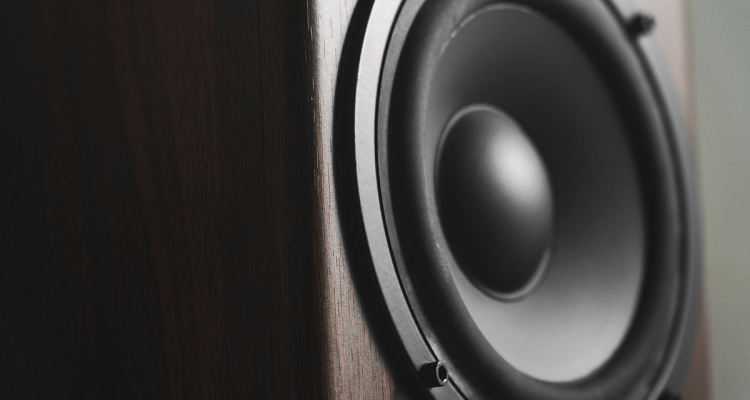Short answer: start at 80 Hz, then nudge up or down until the bass sounds like one big, seamless blanket—not a separate thumper in the corner. Long answer (with zero intimidation)? Let’s do it.
What a “crossover” actually is
Think of the crossover as the handoff point. Above it, your main speakers do the work. Below it, the sub takes over. Get the handoff right and the sound feels whole. Get it wrong and you’ll hear a gap (thin mid-bass) or a bloated overlap (boomy, muddy).
The safe starting point: 80 Hz
80 Hz is the classic baseline (it’s even the THX standard). Set your AVR/processor crossover to 80 Hz, listen for a couple of favorite tracks or a movie scene with drums/voices/explosions, and you’ll already be in the ballpark.
Match the crossover to your speakers
If you know the –3 dB bass spec of your speakers (the point where their response starts dropping), set your crossover 10–20 Hz above that number. If you don’t have the spec, these ballpark ranges work surprisingly well:
- Tiny satellites or soundbar surrounds: 100–120 Hz
- Compact bookshelves: 80–100 Hz
- Larger bookshelves / modest towers: 70–80 Hz
- Full-range towers (truly strong bass): 60–70 Hz (sometimes lower, but only if measurements or careful listening say it’s smooth)
Why not always go super low? Because most speakers don’t have clean, strong output down deep. Asking them to carry too much bass creates strain and messes up clarity. Let the sub do subwoofer things.
A quick gear sanity check
- Using an AVR/processor? Set all speakers to Small (yes, even towers). That activates bass management.
- On the sub itself: Turn the sub’s crossover knob to maximum or set it to LFE/Bypass so your AVR’s crossover is the boss.
- LPF for LFE setting (in your AVR): Leave it at 120 Hz. That’s just for the LFE channel in movie mixes, not your main speaker crossover.
- Sub gain: Start the sub’s volume around 10–12 o’clock before running auto-calibration.
How to fine-tune by ear
- Start at 80 Hz.
- Play a track with steady bass guitar or kick drum (or a scene with deep rumbles + clear voices).
- Lower the crossover in 10 Hz steps if bass feels thick, bloomy, or you can “locate” the sub.
- Raise it in 10 Hz steps if the sound gets thin around the kick drum/bass guitar, or you hear a hole between speakers and sub.
- Stop when voices sound natural, kick drums feel punchy (not puffy), and bass lines are clear—not smeared.
Phase & distance: the secret sauce
Even a perfect crossover setting can flop if the sub’s timing is off.
- Phase/polarity: Start at 0°. Flip to 180°. Keep whichever sounds fuller and cleaner at your main seat.
- Distance (AVR setting): Trust your room correction’s number—even if it’s “longer” than the tape measure. It accounts for processing delay and can lock the sub to your mains.
Common symptoms and quick fixes
- Boomy / one-note bass: Raise the crossover a touch if your mains are struggling, pull the sub a little away from corners, lower sub level slightly, or try the opposite phase.
- Thin / weak mid-bass: Cross higher (e.g., from 80 → 90/100 Hz), and make sure your speakers are set to Small.
- You can “hear” the sub’s location: Lower the crossover or move the sub closer to the plane of your front speakers.
Special cases
Music-first, two-channel setups (no AVR):
Run your mains full-range and use the sub’s low-pass (start ~70–80 Hz). If the sub has a high-pass output to your amp, try it—it often blends cleaner.
Soundbars / tiny satellites:
Don’t fight physics. Cross at 100–120 Hz. If you hear the sub, try moving it forward along the same wall as the bar and recheck phase/polarity.
Large rooms / bassheads:
If you crave chest-thump at party levels, one small sealed sub with a low crossover won’t cut it. Consider dual subs (for smoother bass across seats) or a larger/ported model, and keep the crossover where the blend stays seamless.
A super short “10-minute tune-up”
- Set mains to Small.
- Set crossover to 80 Hz.
- Sub’s own crossover bypassed/maxed; gain at 10–12 o’clock.
- Run your AVR’s room correction.
- Try 0° vs 180° on the sub; keep the stronger, cleaner option.
- Nudge crossover ±10 Hz until drums snap, voices stay natural, and the sub “disappears.”
Final take
There isn’t one “right” number for every room, speaker, and taste. But there is a very dependable path: start at 80 Hz, match to your speakers’ real capability, then fine-tune phase and a few 10 Hz nudges until the bass stops drawing attention to itself. When it’s right, you won’t be thinking “nice sub”—you’ll just be grinning at the music and movies.
